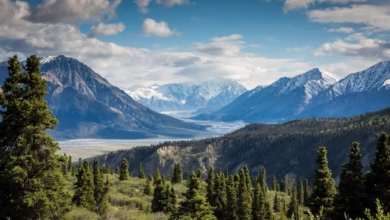From Exploration to Refining: The Complete Journey of Crude Oil Production and Its Impact on Global Oil Supply Chains

The global journey of crude oil from deep beneath the earth to refined products fueling industries and daily life is a complex and ever-evolving process. As oil market trends shift in response to technological innovations, geopolitics, and growing environmental concerns, understanding the complete production cycle is more important than ever. This article provides an in-depth exploration of the modern world of oil—from state-of-the-art oil exploration techniques and advances in shale oil and offshore drilling to the intricate mechanisms of oil extraction, transportation, and refining. By examining each stage, we’ll uncover how OPEC decisions, oil reserves, and global oil trade patterns shape oil prices and energy security. In addition, we’ll consider the environmental impact of oil, the challenges of oil supply chains, and emerging oil alternatives such as biofuels. Whether you are interested in oil investing, the downstream oil sector, or the latest oil technologies and regulations, this comprehensive overview will illuminate the key factors influencing today’s oil industry and its future trajectory.
- 1. Modern Oil Exploration Techniques: From Seismic Surveys to Shale Oil Discoveries
- 2. Drilling Operations and Extraction Methods: Advances in Offshore Drilling and Oil Sands Production
- 3. Navigating Oil Supply Chains: Transportation, Storage, and the Downstream Oil Sector
1. Modern Oil Exploration Techniques: From Seismic Surveys to Shale Oil Discoveries
Modern oil exploration has evolved significantly in recent decades, driven by advances in technology, changing oil market trends, and the constant search for new oil reserves amid growing global oil consumption. One of the essential steps in identifying promising locations for crude oil production is seismic surveying. Using powerful sound waves that travel through underground rock layers, seismic surveys provide detailed images of subsurface geological formations. This technology allows geologists and oil field services companies to pinpoint potential oil and natural gas deposits more accurately, reducing the risk and environmental impact of oil exploration.
Once potential reserves are identified, exploratory drilling is conducted. Modern drilling operations increasingly employ horizontal drilling and hydraulic fracturing, especially in shale oil formations. These techniques have been instrumental in the U.S. shale oil boom, dramatically increasing domestic oil supply and influencing global oil trade and oil prices. Shale oil recovery methods focus on extracting hydrocarbons trapped in dense rock layers, which were previously inaccessible using conventional drilling. This innovation contributes significantly to the downstream oil industry and petrochemicals production.
Offshore drilling has also benefited from technological improvements. Deepwater platforms and remote-operated vehicles now access oil reserves miles beneath the ocean surface, expanding OPEC production capabilities and altering oil geopolitics. Alongside more sophisticated oil transportation networks, such as pipelines and specialized oil storage facilities, these advancements make it possible to bring remote crude oil fields to global markets efficiently.
Environmental impact of oil exploration and extraction is a central concern for both industry and regulators. Enhanced imaging and automated monitoring systems help reduce accidental spills, minimize land disruption, and support greater compliance with oil regulation. As the industry balances energy security and environmental stewardship, oil technologies continue to evolve, including the integration of biofuels and oil alternatives in energy portfolios.
Overall, the interplay of innovative oil exploration methods, oil supply chains, strict oil compliance standards, and growing demand for oil investing opportunities shape not only crude oil production but also the broader oil market landscape.
2. Drilling Operations and Extraction Methods: Advances in Offshore Drilling and Oil Sands Production
Recent years have seen significant innovation in both offshore drilling and oil sands production, reshaping the crude oil landscape. Offshore drilling, once limited by water depth and seismic risk, now utilizes advanced technologies such as floating production platforms, subsea robotics, and 4D seismic imaging. These tools help operators accurately locate offshore oil reserves, minimize environmental impact, and improve energy security while supplying the global oil market.
The move toward ultra-deepwater drilling, enabled by remotely operated vehicles (ROVs) and advanced blowout preventers, has opened access to previously unreachable oil fields. Enhanced well control and real-time data monitoring not only increase extraction efficiency but also support compliance with strict oil regulation standards. These developments in offshore drilling directly influence oil supply chains, promoting stable oil prices and securing downstream oil flows for petrochemical industries.
In parallel, oil sands production, particularly in Canada, has adopted more sustainable and effective extraction methods. Traditionally, surface mining involved significant landscape disruption, but new techniques like Steam-Assisted Gravity Drainage (SAGD) reduce environmental impact by injecting steam underground to separate bitumen from sand. This process is less invasive and requires reduced land disturbance, aligning with efforts to address the environmental impact of oil and to enhance regulatory compliance within the sector.
While offshore drilling and oil sands are capital-intensive, their long-term importance for global oil trade and oil investing remains high. Both sectors face competition from biofuels, natural gas, and other oil alternatives, but remain integral to meeting rising oil consumption, particularly in developing markets. As energy demand grows, continuous improvements in oil field services and oil technologies will determine the role of these extraction methods in maintaining robust oil supply and supporting OPEC and non-OPEC contributions to oil geopolitics.
3. Navigating Oil Supply Chains: Transportation, Storage, and the Downstream Oil Sector
After extraction, crude oil’s journey continues through a complex system known as the oil supply chain. This process is crucial to maintaining global oil market trends, ensuring energy security, and meeting the world’s ever-growing oil consumption demands. Effective oil transportation, storage, and the transformation of crude into valuable products are fundamental to balancing oil prices, addressing environmental impact of oil, and supporting oil investing and compliance strategies.
Once crude oil is pumped from onshore, offshore drilling sites, or unconventional sources such as shale oil and oil sands, it moves into the transportation phase. Here, oil pipelines play a central role, particularly in linking oil reserves to key refineries or export terminals. Tanker ships handle large-scale movements across continents, contributing to the dynamics of global oil trade. Rail and truck transport fill gaps where pipelines or shipping are not practical, especially in remote oil exploration areas. The choice of transportation method often influences oil price hedging strategies and reflects both environmental impact and regulatory concerns.
Upon arrival at destinations, storage becomes vital. Crude oil and refined products are kept in strategically located oil storage terminals—these sites allow the oil market to manage supply fluctuations, absorb production surpluses, and respond to sudden shifts in oil market trends. Storage levels can affect oil prices globally, creating a direct connection between upstream extraction and downstream oil operations. For oil investing, the flexibility offered by well-managed storage facilities can provide hedge opportunities against volatile price swings regulated by OPEC decisions, oil geopolitics, or unexpected disruptions.
The downstream oil sector represents the final link, where oil refining converts crude into finished goods like gasoline, diesel, kerosene, petrochemicals, and even lubricants. Advanced oil technologies help maximize efficiency, limit environmental impact, and adapt to oil regulation and compliance requirements. Innovations in biofuels and oil alternatives are increasingly integrated into downstream operations, diversifying supply and lessening reliance on traditional crude. Petrochemical output further supports industries ranging from plastics to fertilizers, illustrating the broad economic role of downstream oil.
Collectively, the navigation of oil supply chains—from field to fuel tank—demands collaboration among oil field services, strict adherence to oil regulation, and a thorough understanding of market dynamics. Modern supply chains not only move physical oil but also shape oil prices, promote oil alternatives, and support efforts to maintain global energy security in an era of rapid change.
Conclusion
Understanding the complete journey of crude oil—from initial exploration to advanced extraction methods and through complex supply chain logistics—illuminates the intricate dynamics that define the global oil industry. Modern oil exploration techniques, including high-resolution seismic surveys and shale oil discoveries, have expanded both the scope and efficiency of finding new oil reserves. Meanwhile, advances in drilling operations such as offshore drilling and oil sands production underscore the industry’s adaptive use of evolving oil technologies, addressing the diverse geological and technical challenges of today’s oil market.
Navigating the intricate oil supply chains—encompassing oil transportation, oil storage, and the downstream oil sector—highlights how global oil trade and oil price hedging strategies shape not just oil prices but broader market trends and energy security concerns. Ongoing developments in oil refining and petrochemicals reinforce the critical role of innovation in meeting rising oil consumption and regulatory demands for environmental compliance.
As the world considers the environmental impact of oil and explores oil alternatives like biofuels and natural gas, effective oil regulation and energy transition policies are becoming increasingly important. Investors and policymakers must monitor OPEC strategies, shifts in oil geopolitics, and evolving oil field services to make informed decisions about oil investing and resource management.
By exploring each phase of crude oil production and supply, stakeholders gain valuable insights into how oil exploration, extraction, and transportation intersect with economic and environmental factors, guiding the future of oil trading and the broader energy landscape.
References
List all sources used in APA format here based on the content cited in the article.





